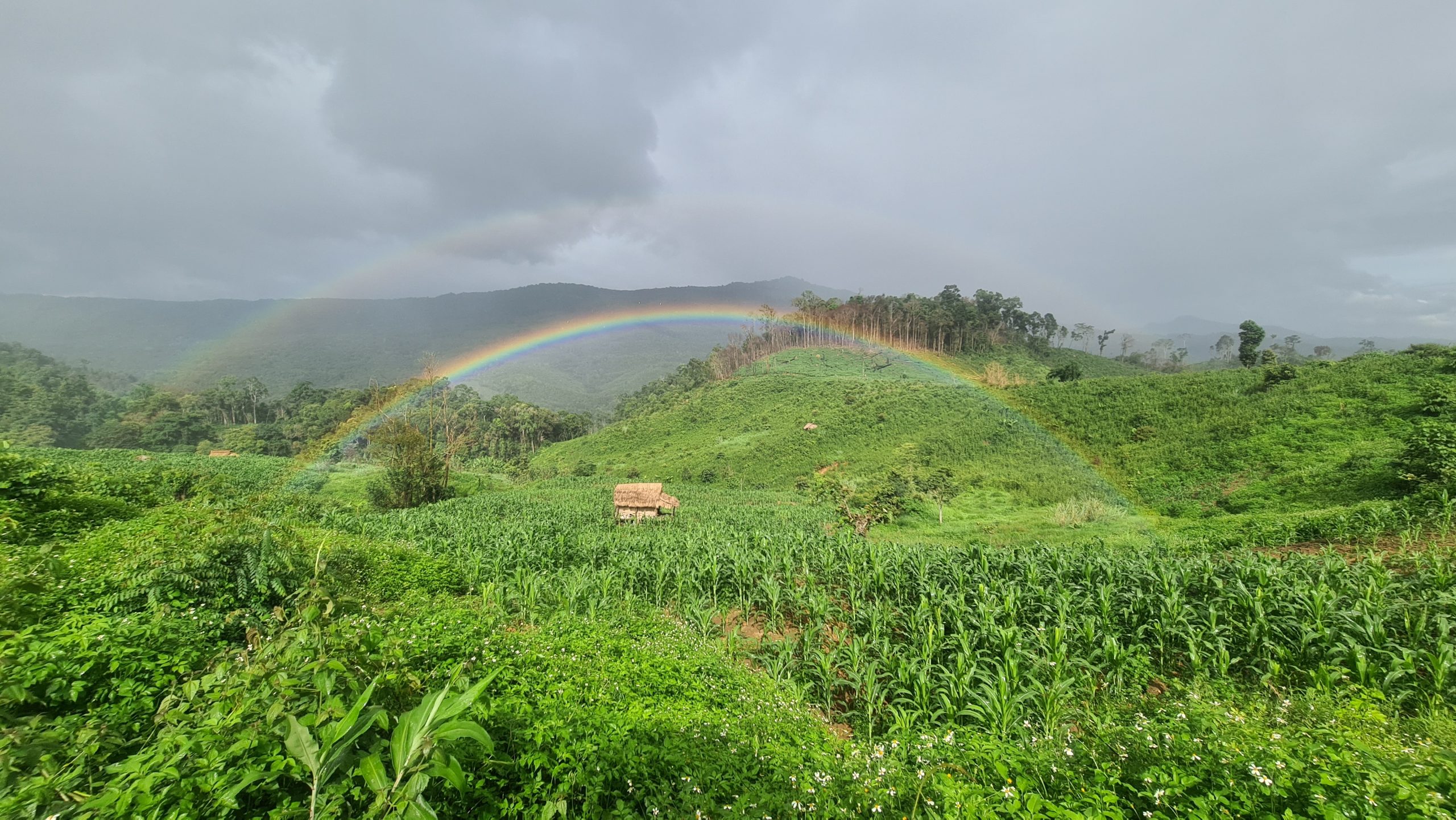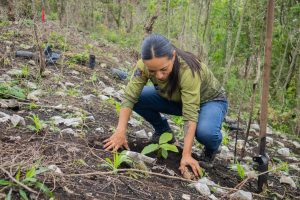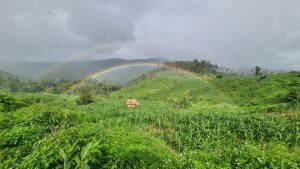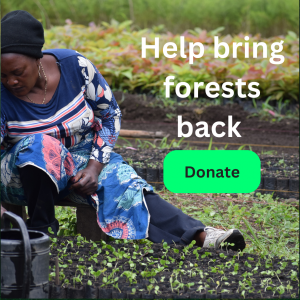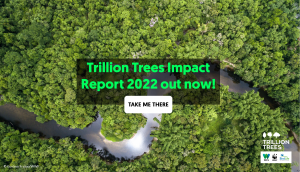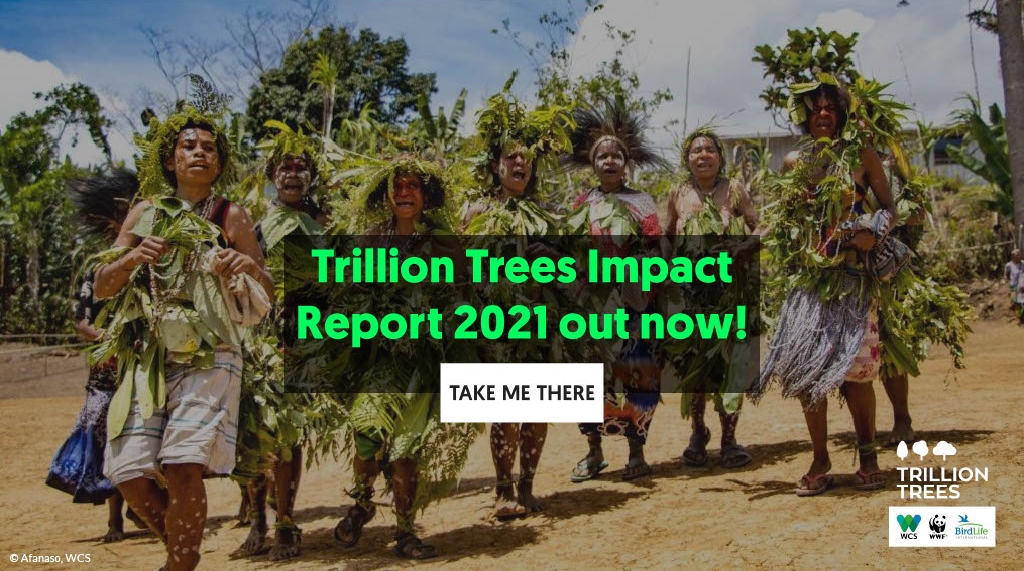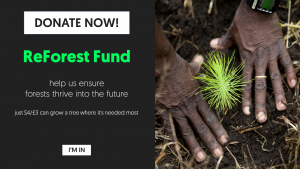By Doug Hull, Anke Scheper and Christina van Winkle
23 June 2025
Many nature-based solutions, including Forest Landscape Restoration (FLR), face several barriers to implementation and scale. Lack of early-stage financing is a major reason – capital is needed to turn restoration ideas into investible, operational projects. For most initiatives, this means years of work to build feasibility studies, stakeholder partnerships, financial models, and monitoring frameworks. Yet few investors are willing to fund this phase, and take on the associated risks.
This is partly because FLR is still undervalued, despite the range of benefits it provides and risks inaction brings to commodity production in forest landscapes, and because we lack an appreciation of nature as a real asset. As a result we lack proven examples, predictable revenue models, and the kind of infrastructure seen in more established sectors. Revenue models beyond carbon are still taking shape, with inconsistent monetisation options for outcomes like biodiversity, water, and nascent schemes to deliver finance through commodity supply chains. Early stage projects also lack strong business plans or clear cash flow, making them hard to finance. A recent article published by the World Economic Forum made the point that most conservation projects do not generate cash flow – not because they lack ecological value, but because they were not designed around market demand.
Upfront costs are high, returns take years to materialize, and weak enabling conditions – such as unclear land rights or unstable regulations – further increase risk. On top of that, it is difficult to quantify the material risk and benefits for corporates, government, and wider stakeholders in a way that enables investment. Too often, buyers of outcomes are not involved early enough to help shape or commit to projects, leaving developers without the signals they need to build viable financing plans. Many outcome buyers, for example corporate carbon purchasers or sustainability-driven commodity companies, expect to engage with fully operational, investment-ready projects – but are not willing to contribute to their early-stage development.
Thankfully, a growing number of project accelerators are emerging to provide support for early stage programmes. These programmes can help with critical elements of the project preparation process, such as feasibility assessments, outcomes modelling and development of robust and investible business plans. However, care is needed to ensure accelerator funding is deployed appropriately, with a focus on developing an anchoring revenue model and a clear plan to realise this through securing commitments from buyers.
Currently, too many restoration initiatives remain undercapitalised and fragmented – capable of generating local impact, but unable to scale. Scale is what is sorely needed if we are to meet ambitious global climate and biodiversity goals and achieve resilient supply chains. Vehicles that can support the early stage development of impactful programmes are key to enabling this. Here’s what we think is needed to get it right:
Addressing the challenge
There is a need for a new generation of accelerators that link together to provide tailored end-to-end support to projects, and that are geared to support projects toward both more established revenue mechanisms, such as the Voluntary Carbon Market, and emerging approaches, such as combined carbon credit / agricultural / agroforestry business models or insetting approaches, and the sale of outcomes to supply chain companies sourcing from a project area. We need a well-structured approach, tailored to the realities of the work.
This means:
Linking with demand: This is critical to securing investment; the most successful models ensure alignment with priority areas for potential outcome buyers early on. There must be an appetite to pay for outcomes which will provide a revenue stream – not necessarily just carbon or biodiversity credits, but also potentially outcomes that align with common supply chain sustainability targets, or those that address challenges faced by public authorities or utilities such as water companies.
Clarifying roles: There is an opportunity for buyers to play a role by co-investing in the development of projects to deliver the outcomes they later intend to purchase. This can help to ensure project design meets buyer priorities as well as delivering on overall project objectives, and can help provide confidence to investors in committing to a project.
Structuring support: Early-stage funding should cover rigorous feasibility studies, social and environmental impact assessments, and review and prioritisation of potential revenue models – all foundational to building investor confidence. In addition, early-stage support must include high-quality technical assistance to ensure that projects align with latest guidance on best practice in all aspects of project design, readiness for independent certification, and the implementation of sound restoration strategies that deliver for people, nature and climate. Many projects also need support in building a successful management organization that operates effectively according to annual, medium, and long-term plans.
There are plenty of examples of successful accelerator schemes where early-stage financing has enabled sustainable projects to reach investment-readiness and get off the ground. New types of accelerator and incubator schemes are coming into the market – helping to build a market infrastructure from the ground up and providing end-to-end support from early stages of project development through to implementation at scale. Examples include FSD Africa’s Carbon Programme for the Environment, delivered in partnership with Finance Earth and the Africa Natural Capital Alliance, and DEFRA’s UK Nature Accelerator. But the market is in its infancy and needs structure.
Accelerators support FLR projects through a combination of financial tools such as grants, loans, equity, or concessional capital – and non-financial support, including technical expertise and mentorship. Many help projects develop viable business plans, move beyond reliance on grant funding, and in some cases, support piloting and facilitate buyer or investor relationships.
Still, a core challenge is timing: many accelerators assume that critical groundwork such as feasibility studies, risk assessments, and community engagement has already been done. In reality, many projects lack these foundational elements, making it difficult to assess viability or build realistic financial models. Without early support for these activities, business plans often miss the mark on operational and ecological realities.
Environmental and social impact metrics are another blind spot, often delayed until after financing, which can undermine the case for blended or impact-first investment. In addition, many accelerators fail to connect directly with investors from the outset. This results in a mismatch between what accelerators define as “investment-ready” and what investors actually need – particularly in a sector where long timelines, high upfront costs, and uncertain returns are common. Too few programs are designed with a clear view of the eventual investor or off-taker, meaning projects may graduate from accelerators without a realistic path to securing repayable finance. As a result, many promising initiatives remain stuck in the pipeline.

In practice
Trillion Trees, working with Finance Earth and Form International has developed the Forest Restoration Catalyst (FRC) to address the challenge of securing early-stage investment in FLR. The FRC builds scalable FLR initiatives with local stakeholders and works to improve the enabling environment for nature-based investment, ensuring equitable benefit sharing models are the foundation of any investment. This supports an increase in biodiversity, improvement in the socio-economic opportunities for communities and enhanced ability for climate adaptation and mitigation.
Projects receive support from the FRC to build long-term financing plans, based on business models that deliver increased forest cover and all the associated nature-based outcomes and benefits for biodiversity and communities.
The FRC addresses some of the common challenges that other accelerators have faced: starting with feasibility and landscape assessments, progressing through business case development and programme design, and moving towards investment readiness, complemented by ongoing support for implementation (at a pilot or full scale level) and investor engagement.
Examples of how this can work on the ground:
Upper Paraná, Atlantic Forest, Brazil
The FRC supported WWF in Brazil to develop an investable model to drive forest restoration at scale across the Upper Paraná water catchment, part of the Atlantic Forest ecoregion. This area has been subjected to high levels of deforestation for soy bean agriculture, but climate change, biodiversity loss, and water availability concerns now make it a priority region for restoration efforts that protect water courses and prevent soil loss. FRC support helped deliver an inclusive and scalable landscape business plan to restore 1.6 million hectares of high priority degraded land in the Upper Paraná Atlantic Forest over the next 25 years. This included cost-benefit modeling, analysis of market opportunities for high value commodities, for example yerba mate, and Payment for Ecosystem Services (PES) options (water and carbon) that could incentivise farmers to switch away from monoculture crops to agroforestry systems, and restore riparian areas which increases connectivity for wildlife.
Peru
Another example of the strategic deployment of catalytic funding that can mobilise FLR at scale comes from Form International’s work in Peru. Form International is a Dutch forest management and consultancy company that has developed an FLR project in Peru that highlights the crucial role of phased, early-stage support. This initiative is restoring deforested areas by planting native commercial species, aiming to build a profitable forest enterprise and strengthen domestic timber value chains. The project also creates conservation areas, and features an outgrower program for local smallholders, offering technical assistance and inputs for mixed native tree plantations and agroforestry systems on degraded lands.
The project’s success is rooted in catalytic funding, following a clear phased approach: In phase one, initial funding enabled a feasibility study, assessing timber market potential, site conditions, and land tenure, establishing the project’s technical, environmental, and social viability. In phase two, to the establishment of a Peruvian entity (Amazon Restoration Company Peru), land acquisition, and the successful launch of pilot plantations, conservation zones, and an outgrower program. This phase also produced key preparatory studies, structured the management and financial model, secured local agreements, and designed investment vehicles for project expansion. The project is now entering its third phase, focused on mobilizing private capital to secure additional land and expand the outgrower program. In this stage, there is a strong emphasis on achieving ESG compliance, and completing the documentation needed to attract long-term investment. Besides Peru, Form International has similar project investments under development in Ghana, Uganda and Indonesia.
This model clearly demonstrates how initial catalytic funding de-risks projects by not only supporting feasibility studies, but also enabling vital early implementation. This is essential for attracting the private investment needed to achieve significant ecological and economic scale.
What next?
Bold action is needed from philanthropic organisations who understand the need for early-stage investment and are willing to grasp the opportunity to support accelerator and incubator mechanisms as a vehicle for pipeline development, and for catalysing sustained private-sector funding in landscapes. Outcome buyers also need to play a role by co-investing in the development of projects to deliver the outcomes they later intend to purchase.
These actors can come together to deliver a new generation of accelerators that collectively provide tailored, end-to-end support to projects through to implementation at scale. With a growing range of potential revenue models for nature conservation and restoration, there is a need for flexible accelerators that can support projects in prioritising and ultimately securing revenues through a variety of models spanning nature-based credits, sale of sustainable commodities or alignment with locally-specific outcome buyers, among others. By providing holistic and tailored support, with business model planning built in from an early stage, accelerators can play a vital role in unlocking much needed investment at scale in global Forest Landscape Restoration.
You can join us to discuss these issues further at a panel event on 25th June at London Climate Action Week.
Doug Hull is Senior Associate Director, Finance Earth
Anke Scheper is Forestry Consultant, Form International
Christina van Winkle is Forest Programme Officer for Sustainable Landscapes, BirdLife International
Form International is a specialised management, investment and consulting firm active in the space of sustainable (agro)forestry, nature based solutions, landscape management and restoration in (sub)tropical Africa, Asia and Latin America. We create and deliver innovative and sustainable solutions for projects, investors, supply chain actors, governments, NGOs and local communities. Our services and projects provide for multiple returns on investment for people, planet, profit and purpose.
Finance Earth is a mission-driven social enterprise, working in partnership with world leading environmental organisations to protect and restore nature utilising market based mechanisms and implementing bespoke financial tools.

